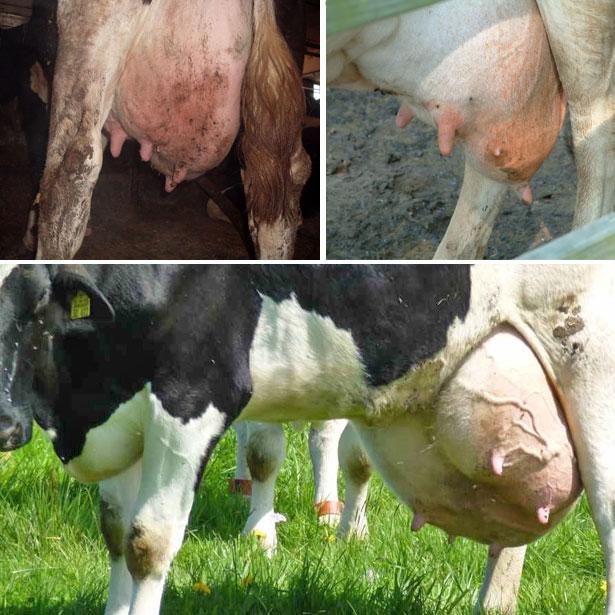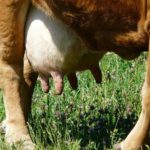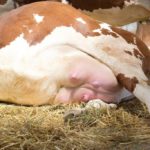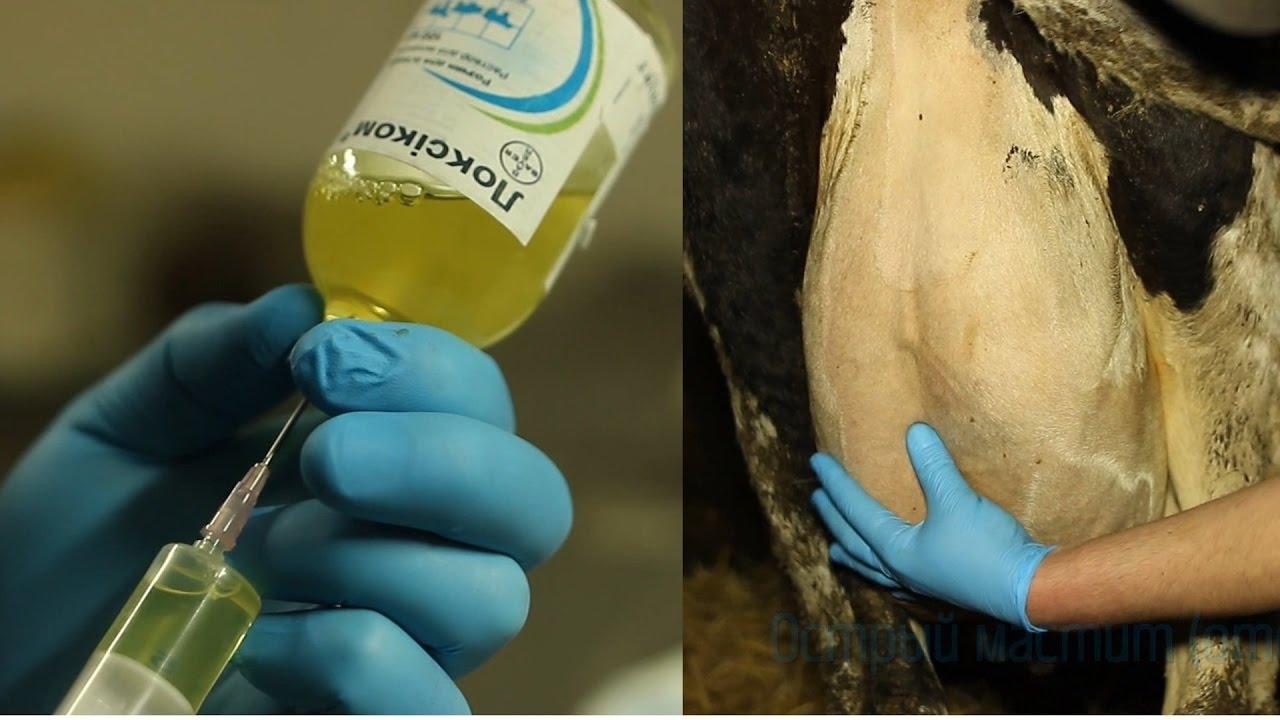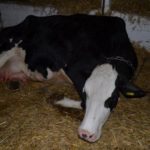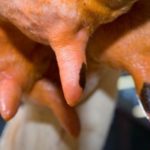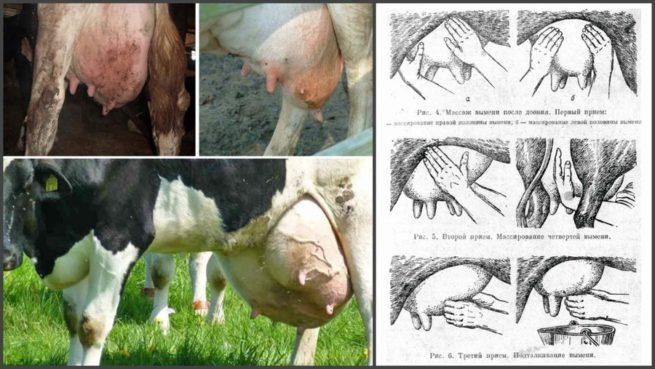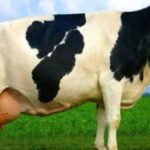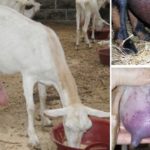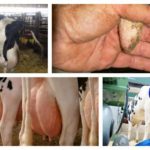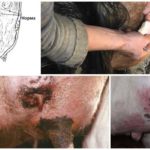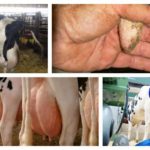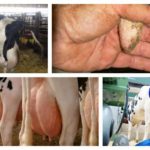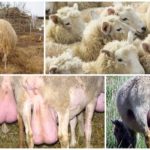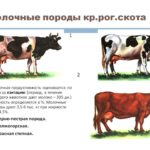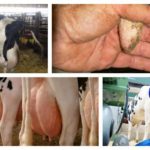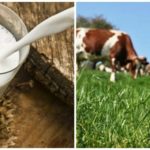Cows are bred on farms and private farms to produce milk. Its productivity directly depends on the condition of the animal's udder. That is why the occurrence of serous mastitis in a cow is a serious problem for farmers. The disease requires prompt treatment to avoid financial losses and preserve milk yield and the health of the animal. Today's conversation is about the causes of the disease, methods of treatment and prevention of mastitis.
Causes
Serous mastitis is an inflammation of the udder in cows. Usually 1-2 lobes are affected, much less often the entire organ is affected. It is characterized by the accumulation of effusion under the skin and connective tissue, and petrification of the affected area of the udder. It usually occurs after childbirth, when the animal's immunity is reduced.
Serous mastitis is bacterial in nature. The disease is caused by staphylococci, streptococci, and E. coli. After calving, it can be found in a third of the cattle population on the farm. There are several reasons for the development of serous mastitis in animals:
- mechanical damage to the udder (injuries, scratches) received in the pasture or in the barn;
- improper milking of cows (especially first-calf heifers), when milk remains in the udder;
- complications after calving (enteritis or endometritis);
- keeping animals in unsanitary conditions;
- diseases of the gastrointestinal tract.
It can be transmitted from one animal to another due to overcrowding in the barn. Often serous mastitis occurs as a complication of ordinary mastitis, which was not cured in time.
Symptoms of the disease
The infection affects part of the udder or covers it completely. It is characterized by a disruption of nerve conduction in the tissues of the udder, a decrease in the level of production of oxytocin, a hormone without which childbirth and lactation in mammals are impossible.
With the development of serous mastitis, the following signs of the disease are noted:
- The cow becomes lethargic and loses appetite.
- The udder becomes hard and turns to stone.
- The animal's temperature rises, the udder becomes swollen, painful, and hot to the touch.
- Milk yield decreases, milk becomes liquid, acquires a bluish tint, and casein flakes appear in it.
- The udder tissues turn red and look inflamed.
The main difference between serous mastitis is the pronounced redness of the organ and its density.In some animals, the lymph nodes above the udder become inflamed.
Diagnostics
When making a diagnosis, the udder is examined from behind and from the sides, each of its lobes, and nipples. It should be symmetrical. Pay attention to the color of the fabrics. Milk out a little milk, check its consistency, color, and presence of flakes.
The organ is palpated twice: before milking and after it, the density of the udder, soreness, the presence of seals, folds, and the thickness of the skin are noted. Check the mobility of the udder. After milking, the palpation should be deeper.
Since serous and other types of mastitis in the initial stage can have a latent form, milk must be sent for analysis every month. If a disease is suspected, milk is taken separately from each quarter of the udder.
How to treat serous mastitis in cows
Treatment should begin immediately after diagnosis. Competent actions can eliminate the disease in 7-10 days, otherwise it may take a more severe form and the cow will stop giving milk.
Drug treatment
Medications for the treatment of serous mastitis should be prescribed by a veterinarian. A set of recommended measures allows you to quickly cope with the disease. Ideal for treatment:
- "Mastisan A". The complex of sulfadimezin, penicillin and streptomycin provides a quick antibacterial effect. "Mastisan" is an oily liquid of white or yellowish color. Available in bottles of 100, 50, and 20 milliliters. Before use, it is heated to 37-39 ° C and shaken to mix.The medicine is drawn into a syringe without a needle and injected into the nipple canal (5-20 milliliters) in the inflamed part of the udder. Then massage the nipple from bottom to top with careful movements. The product is used once a day. At the initial stage of the disease, one injection is sufficient, for more severe forms of serous mastitis - 5-7 days, at the same time.
- "Mastomycin". The drug is available in gel form and consists of gintomycin and lidocaine. Sold in the form of syringes, completely ready for use. Injected into the nipple canal every 12 hours. 2-6 injections are sufficient, depending on the severity of the disease.
- "Masti Veixim" is a German complex drug. Available in the form of an oil suspension. In addition to the active ingredients (trypsin, chymotrypsin, papain) it contains vitamins A and E. The method of administration is similar, 3 procedures are enough.
Before administering the drugs, the animal's udder and nipples are washed with warm water and soap and wiped carefully. The nipple is treated with alcohol. Use sterile instruments.
Complex treatment
Successful treatment requires a set of measures. Sick animals are separated from healthy livestock. They are left in the barn and not turned out to pasture. They stop giving juicy greens and limit drinking. Fresh grass for pets is dried. This is done to reduce lactation. Cows are kept in a clean, dry and warm room. It should be well ventilated, but animals must be protected from drafts.
In addition to oral antibiotics, absorbable and warming ointments are applied to the udder. Ichthyol ointment, heparin, and liniment according to Vishnevsky are used. Procedures begin 3-4 days after the start of the course of antibiotics, after severe inflammation has subsided.Warming up with a quartz lamp is effective for relieving inflammation.
Additionally, the nipple canals are washed with a solution of baking soda (2% sodium bicarbonate). Carefully milk the animal by hand 4-6 times a day. To completely release the udder, oxytocin is administered - 5 milliliters for every 100 kilograms of the cow's weight. The drug is administered intravenously, intramuscularly or subcutaneously; milking begins 10 minutes after the injection. The organ is irrigated several times a day with a solution of chlorhexidine or furatsilin.
Massage
The procedure allows you to get rid of seals. Carry out with clean hands, gently massage the udder from bottom to top for 15 minutes 3-4 times a day. Before the massage, the udder is lubricated with Vaseline, glycerin, a special cream or lightly soaped.
Traditional methods
To relieve swelling and heat, cabbage leaves are used and tied to the udder overnight. Laundry soap is used as an antibacterial agent. Lather the affected organ well and leave for 25-30 minutes, then rinse it with clean warm water. Animals can be given decoctions of nettle or chamomile. Compresses made from grated carrots or potatoes or applications made from rice or potato starch relieve heat and inflammation.
How dangerous is the disease?
Serous mastitis is a disease that reduces the productivity of animals. If it is not treated, the cow will not milk and lactation will stop. In severe cases, the disease takes a chronic form, tissue necrosis occurs, and the animal dies.
Preventive measures
For prevention, you should systematically examine the udder and test the milk for mastitis. Treat scratches and cuts on the udder with an antiseptic. Keep the barn clean and warm.
Before milking, wash the udder and wipe dry. Give a massage.Milk the animal thoroughly. Feed well and give vitamins and mineral supplements. Systematically provide veterinary examinations of livestock.
Is it possible to drink milk from sick animals?
Milk from sick animals is disposed of. It should not be drunk or recycled. When consuming such milk, sore throat and intestinal disorders may occur. Products obtained from such milk have an unpleasant odor, spoil quickly, and cannot be eaten.
Serous mastitis in cows is common; with timely treatment, it can be successfully treated and does not affect the productivity of animals. High-quality living conditions, care and good nutrition reduce the risk of developing the disease.

